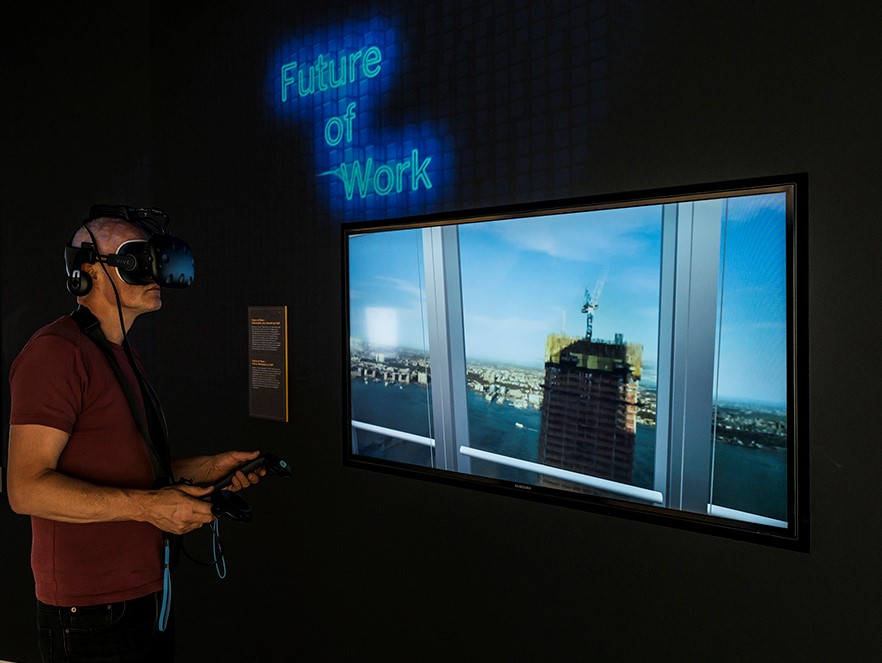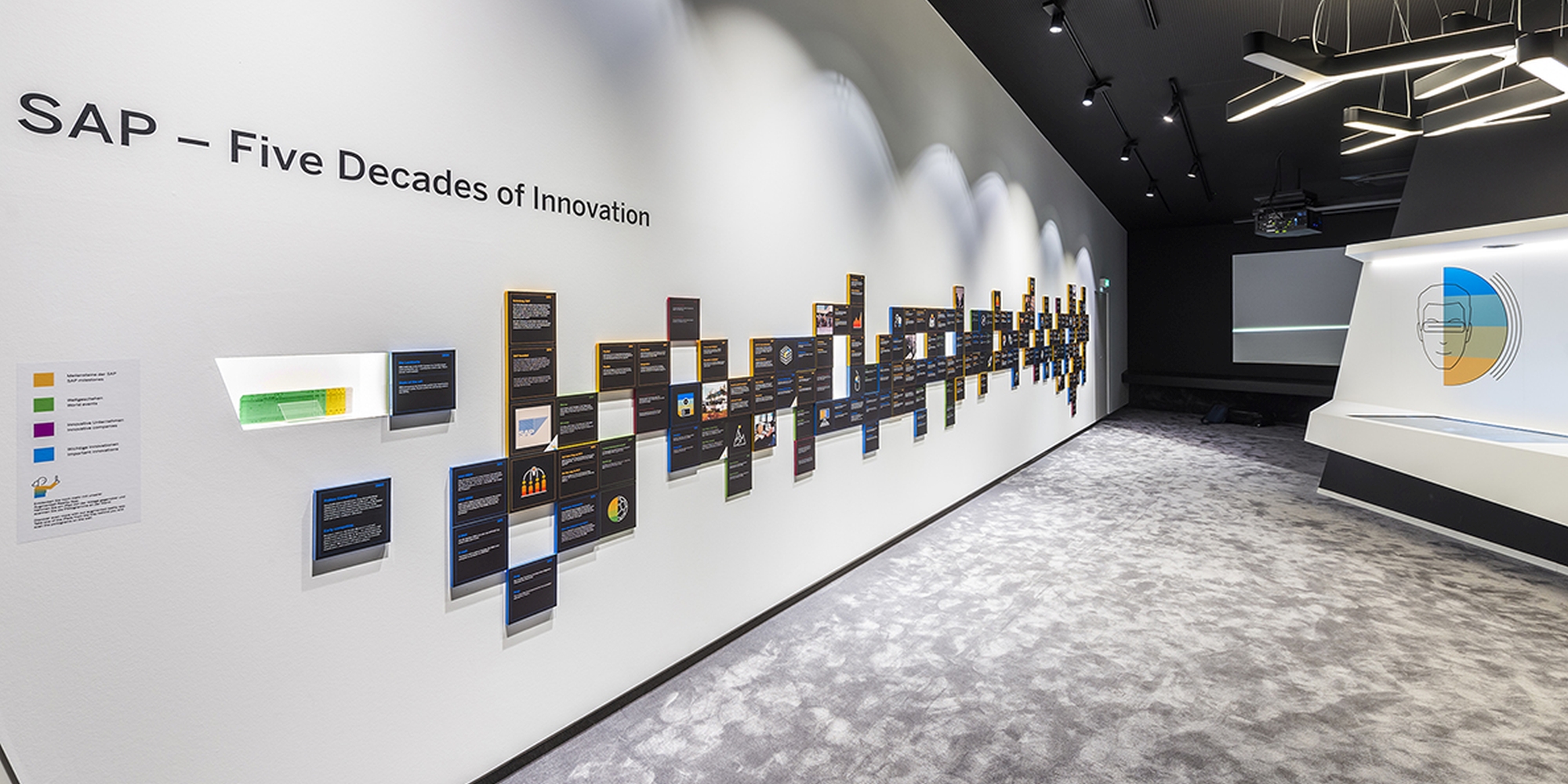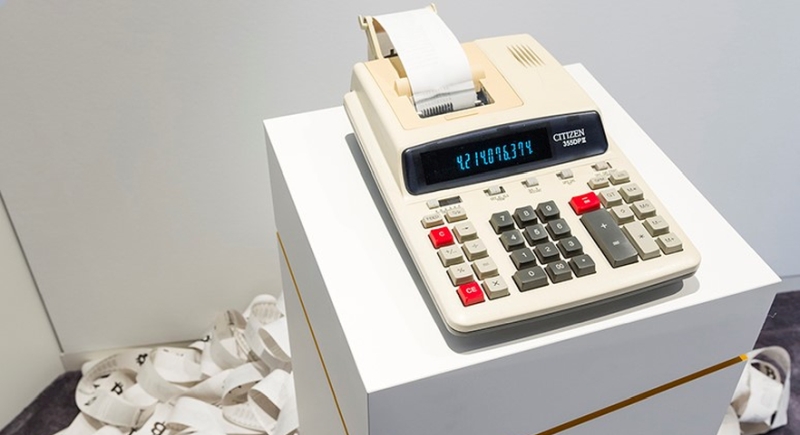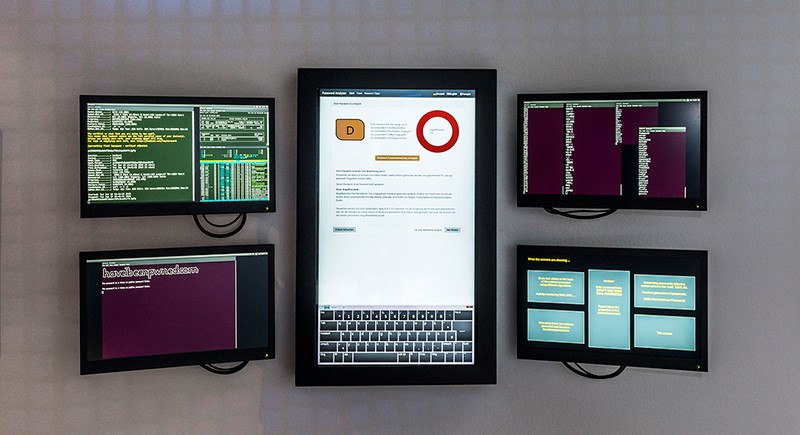In 2012, Europe’s largest software manufacturer SAP commissioned the Ars Electronica Futurelab with a representative work on the 40th anniversary of the former start-up. The exhibition format “40 – years of Future” was specially developed for the planned company museum in order to communicate the company’s history and key inventions to the general public.
Together with the architectural firm SCOPE , a pavilion was designed for presenting the installations and interactive interfaces. This “Imagination Pavilion”, located in the inner court of the SAP headquarter in Walldorf, now forms one of three publicly accessible areas within the company.
Since then, the Ars Electronica Futurelab has repeatedly curated changing content for the SAP Pavilion. Technological developments have been reflected in various formats, current trend themes have been addressed and central questions have been raised. Over the years, the Ars Electronica Futurelab has been able to convince the client and producer SAP of the central role played by artistic perspectives in understanding and critically examining technological innovations, as well as in future-oriented thinking about technologies. In 2018, an exhibition area of the pavilion was dedicated exclusively to media art for the first time. Various works dealing with augmented humanity and models of artificial intelligence were presented.

With their work Nonfacial Mirror the artistic duo Shinseungback Kimyonghun highlights the necessity of non-anthropocentric thinking in the search for the originality of the human versus future developments of artificial intelligence. A table mirror equipped with facial recognition techniques avoids faces by turning around its own axis. Only a concealed or disguised face can use the mirror as such. In disrupting facial recognition by the simplest means, the two artists are confronted with the question of which point of view we perceive truths: “What is true – what we see or what the machine sees for us?
Bittercoin: the worst mine ever, a sculpture by Martín Nadal and César Escudero Andaluz criticizes the developments of the crypto currency Bitcoin in the race for a maximum net product. As a decentralized electronic system for capital transactions, Bitcoin initially was designed to be an alternative to globally operating central banks. But as the digital currency quickly became a classic investment, it started to repeat structures of the existing economy. Nadal and Andaluz visualize these structures with a hacked table computer. This very simple computer validates outstanding Bitcoin transactions in the blockchain and takes an estimated 11 million years to achieve success. A papery mountain of printed calculations is constantly growing and shows the necessary resources and the material consumed.
With learning to see: Hello, world!, the artist and researcher Memo Akten displays the developments of an artificial neural network through its own filters. Within the exhibition, the network receives data via surveillance cameras, on which it is trained live. If too much new information is recorded or information is not repeated, it forgets, loses filters and data it has set up. The recorded videos and images are displayed on several screens in the way the network interprets them. The technical process of learning becomes visible. The Ars Electronica Futurelab also participated with a work realized in-house. With Password cracker, visitors can experiment with their own passwords in an interactive installation. How secure is the protection offered by the password? How long does it take to find the combinations? Simpler passwords can be cracked live with a gamer PC, and a public website can be used to check whether one’s own email accounts can be found in the leaks of recent years.
The Ars Electronica Futurelab placed this range of approaches, from questions about patterns and characteristics of deep learning, through the Internet of Things, to media archaeology or economics, in the broader context of the future relationship between technology and society. How are our object cultures, our history, economic, political and social structures shaped by new technologies? How can these references be imagined as harmonious and where are their assumptions to be criticized? The exhibition realized in the SAP Pavilion in 2018 was a first step in expanding and sustaining the space for artistic approaches in the building designed for the company.
Credits
Ars Electronica Futurelab: Roland Aigner, Peter Freudling, Stefan Mittlböck-Jungwirth-Fohringer, Otto Naderer, Manuela Naveau, Ali Nikrang, Clemens F. Scharfen


